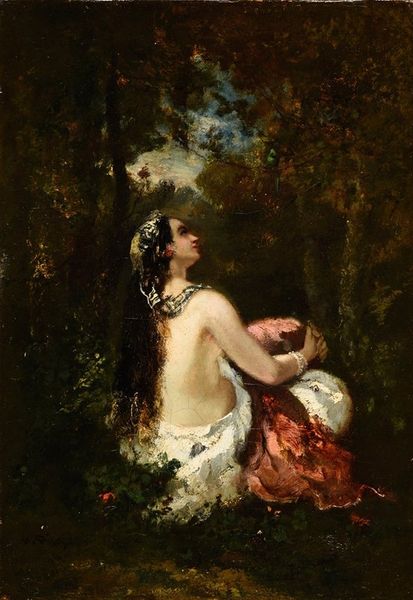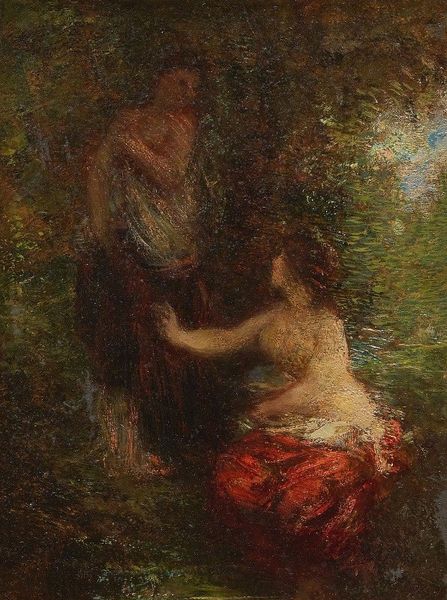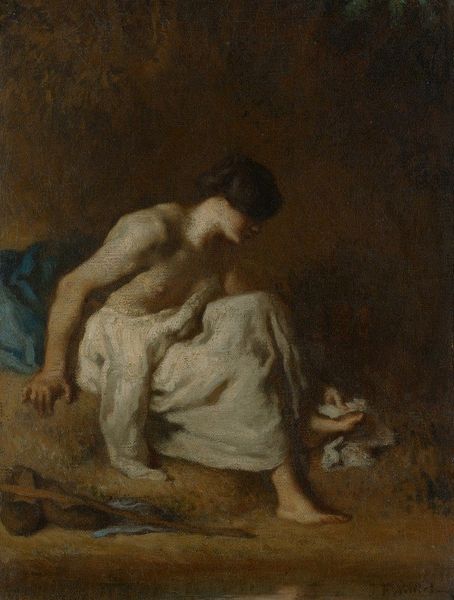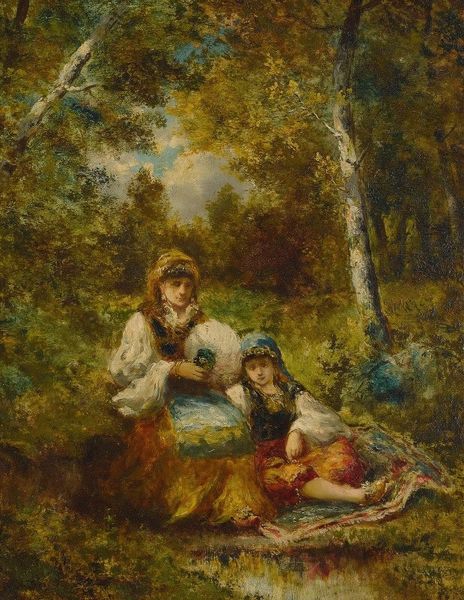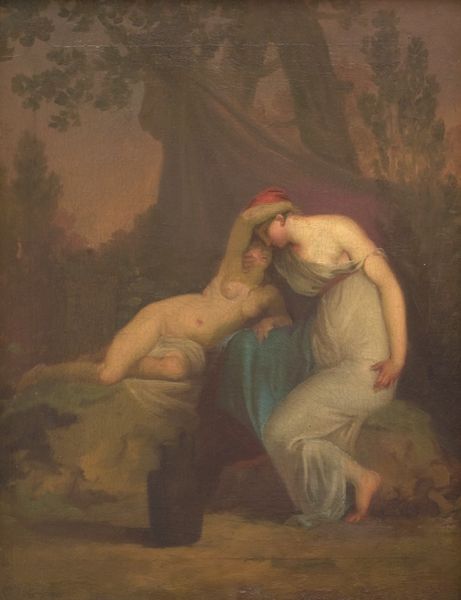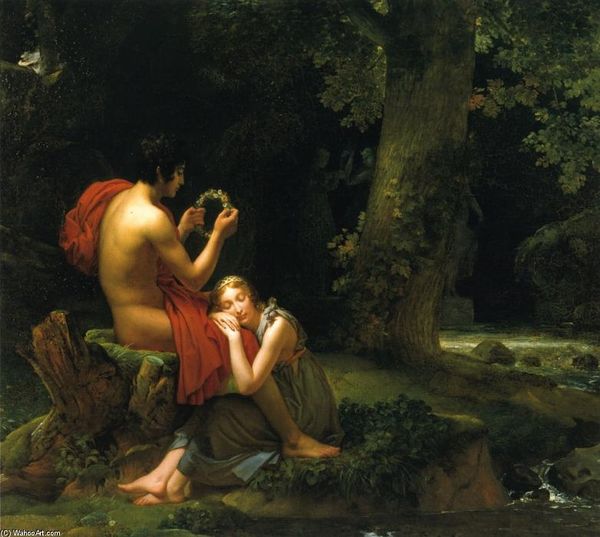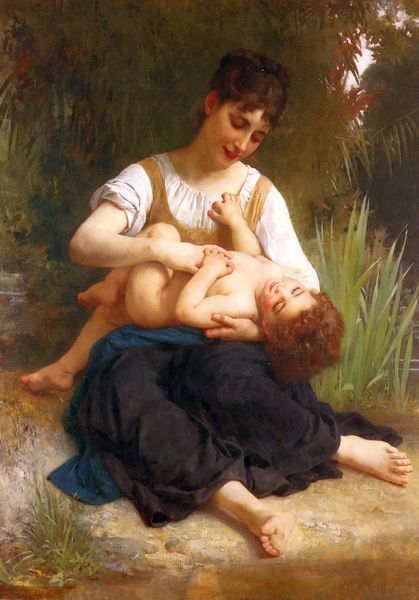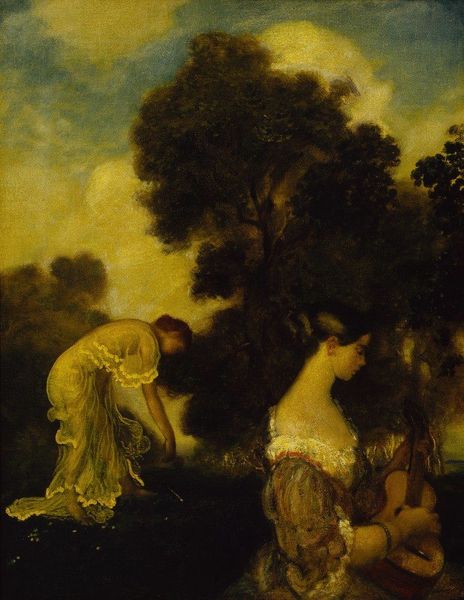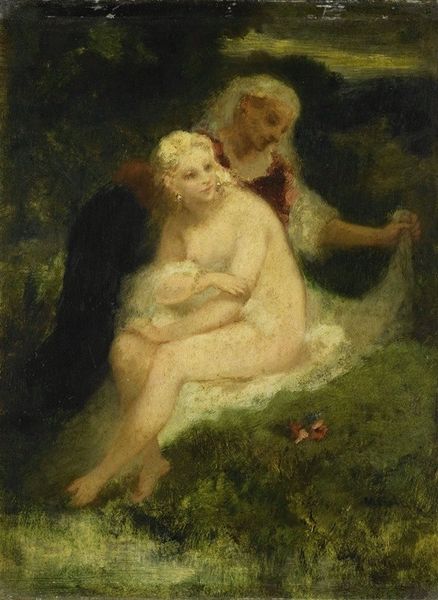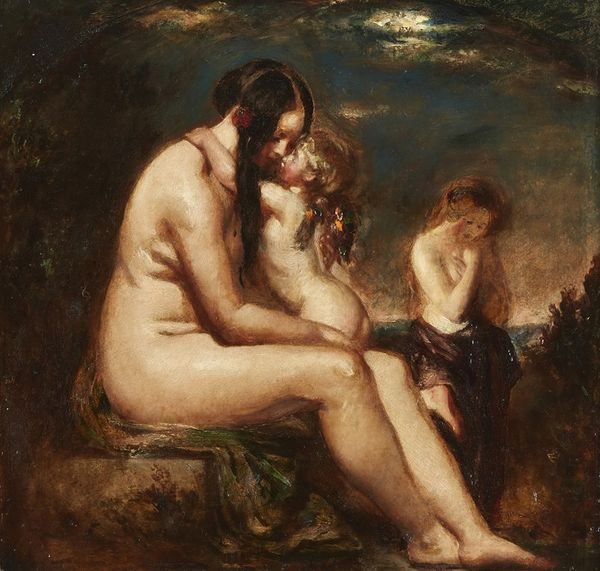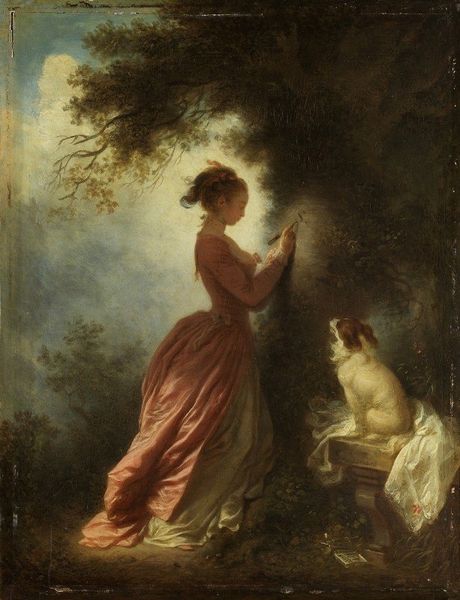
painting, oil-paint
#
portrait
#
figurative
#
painting
#
oil-paint
#
oil painting
#
romanticism
#
genre-painting
#
portrait art
Copyright: Public Domain: Artvee
Curator: This is Pierre-Paul Prud'hon's "The Happy Mother," dating to around 1810. He worked in oil paint with a distinctive feathery style that captures the figures in this enchanting manner. Editor: There's a tender feeling about it, like catching a quiet, hidden moment. The dim lighting makes the figures seem so alive, doesn't it? It’s very... intimate. Curator: Indeed. Prud'hon was known for injecting such sensuality into his works, often drawing on allegorical or mythological subjects. In his era, idealized portrayals of motherhood were used to reflect on notions of civic virtue and domestic harmony, concepts very prevalent during the post-Revolutionary years in France. Editor: Interesting. And look at how softly the light drapes over the woman and child, highlighting their gentle connection. There is an otherwordly sort of serenity in her face. It contrasts strangely with the fairly heavy shadowing. It's Romantic, sure, but there’s a raw kind of realism poking through all the idealized loveliness. She could just be any mother in any era. Curator: Perhaps that contrast reveals something of Prud’hon’s personal life too. Despite the idealizations in his work, his life was tumultuous. Perhaps this image presents the comfort that love can offer. Editor: I wonder who posed for him? There is an honest look in her gaze that tells you motherhood might not always be easy, but she still would not change it. It shows that love transcends it all. Curator: Well, sadly, information on specific models or commissions in Prud'hon's practice can be vague, adding to the somewhat romantic mystery surrounding this Romantic painting. What lingers with me is the vulnerability shown. Despite being idealised the sitters remain profoundly human. Editor: It's made me consider that what an artist leaves out is just as vital as what is there. Prud’hon doesn't tell us everything, but in some ways, the incomplete story here is the most captivating one.
Comments
No comments
Be the first to comment and join the conversation on the ultimate creative platform.
